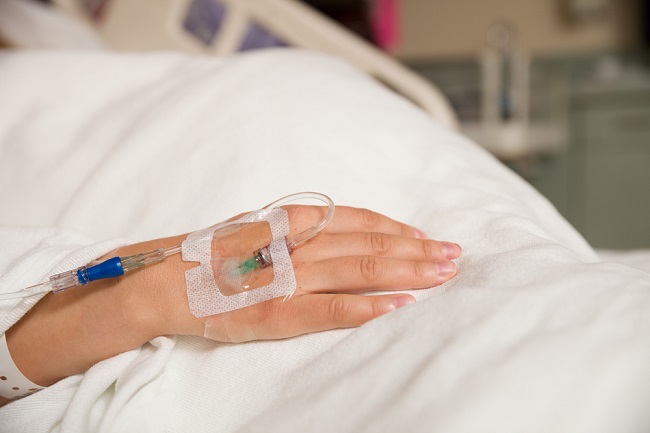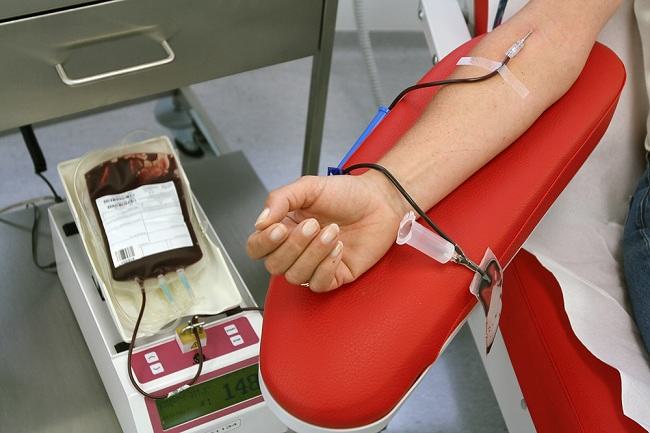Anticonvulsants are drugs to prevent or treat seizures or epilepsy. Anticonvulsants or anticonvulsants are available in various drug forms and should only be used in accordancedoctor's prescription.
Normally, nerve cells in the brain communicate with each other through electrical signals that are present at normal levels. When there is excessive electrical activity in the brain, seizures can occur.

Anticonvulsant or anticonvulsant drugs work by normalizing the electrical activity in the brain, so that seizures can be prevented or treated.
Besides being useful for treating seizures, several types of anticonvulsants can also be used to relieve pain due to nervous disorders (neuropathy), prevent and treat headaches, and treat bipolar disorder.
Warnings Before Taking Anticonvulsants
Anticonvulsants should only be used as prescribed by a doctor. Before using an anticonvulsant, there are several things you should pay attention to, namely:
- Do not use anticonvulsant drugs if you are allergic to these drugs.
- Avoid consuming alcoholic beverages while taking anticonvulsant drugs, as they can worsen side effects.
- Tell your doctor if you are pregnant, breastfeeding, or planning a pregnancy.
- Anticonvulsant drugs can affect the effectiveness of hormonal birth control. See your doctor right away if you experience vaginal bleeding or become pregnant while taking anticonvulsant medications.
- Do not change the type of anticonvulsant medication carelessly while you are pregnant, because there is a risk of causing uncontrolled seizures.
- Avoid activities that require vigilance while taking anticonvulsant drugs, as these drugs can cause dizziness.
- Talk to your doctor about the risks and benefits of anticonvulsant drugs, as they can affect your mood and increase your risk of depression and suicidal ideation.
- Do not change or stop taking anticonvulsant drugs without your doctor's permission, because they can cause repeated seizures.
- Tell your doctor if you have a history of porphyria, myasthenia gravis, sleep apnea, heart disease, lung disease, liver disease, thyroid disease, kidney disease, osteopenia, osteomalacia, osteoporosis, hypoalbuminemia, alcoholism, mental disorders, glaucoma, and diabetes.
- Tell your doctor what medications you are taking, including vitamin supplements and herbal remedies.
- Tell your doctor if you plan to have dental work or surgery.
- During treatment with anticonvulsants, check with your doctor regularly. Benzodiazepine-type anticonvulsants can be addictive, so they shouldn't be used for more than 1 month.
- See your doctor right away if you have an allergic reaction to a medication or an overdose after using an anticonvulsant medication.
Side Effects and Dangers of Anticonvulsants
Anticonvulsants can cause different side effects in each user. Some of the side effects that often appear are:
- Drowsiness
- Nauseous
- Throw up
- Dizzy
- Headache
- Tremor
- Weak
- Double vision
- Heart damage
- Kidney damage
Check with your doctor if the above side effects appear, or if you have an allergic reaction to the drug, such as an itchy rash, swelling of the eyelids and lips, and shortness of breath.
Types, Trademarks and Types of Anticonvulsants
The following are the types, trademarks, and doses of drugs that belong to the anticonvulsant class:
1. Barbiturates
Barbiturates work to prevent seizures by suppressing central nervous system activity, and increasing gamma-acid activity-aminobutyrate (GABA), which is a chemical in the brain that produces a sedative or sedative effect. Barbiturates are used to treat all types of seizures, except absence seizure.
Examples of drugs that are classified as barbiturates are:
Thiopental
Thiopental trademarks: Thiopental (Ber) G, Thiopental Sodium, Tiopol
To find out the dosage and more information about this drug, please visit the thiopental drug page.
Phenobarbital
Phenobarbital trademarks: Phenobarbital, Phental, Sibital
To find out the dosage and more information about this drug, please visit the phenobarbital drug page.
Butabarbital
Butabarbital trademark:-
To find out the dosage and more information about this drug, please visit the blindbarbital drug page.
Amobarbital
Trademark:-
To find out the dosage and more information about this drug, please visit the amobarbital drug page.
Secobarbital
To find out the dosage and more information about this drug, please visit the secobarbital drug page.
Mephobarbital
Trademark:-
To find out the dosage and more information about this drug, please visit the mephobarbital drug page.
2. Benzodiazepines
Like phenobarbital, benzodiazepines work by depressing the central nervous system and increasing GABA activity. Examples of benzodiazepine drugs are:
Diazepam
Diazepam trademarks: Diazepam, Metaneuron, Neurodial, Opineuron, Valium, Valisanbe
To find out the dosage and more information about this drug, please visit the diazepam drug page
Clonazepam
Clonazepam trademarks: Clonazepam, Riklona 2
To find out the dosage and more information about this drug, please visit the clonazepam drug page
Lorazepam
Lorazepam trademarks: Lorazepam, Ativan, Loxipaz, Merlopam, Renaquil
To find out the dosage and more information about this drug, please visit the lorazepam drug page.
Clobazam
Clobazam trademarks: Clobazam, Anxibloc, Asabium, Clofritis, Proclozam
To find out the dosage and more information about this drug, please visit the clobazam drug page.
3. Dibenzazepine
Dibenzapine works by increasing GABA activity and inhibiting sodium activity in cells. Examples of dibenzazepine drugs are:
Carbamazepine
Carbamazepine trademarks: Carbamazepine, Bamgetol, Tegretol
To find out the dosage and more information about this drug, please visit the Carbamezapine drug page.
Oxcarbazepine
Oxcarbazepine trademarks: Barzepine, Prolepsi, Trileptal
Condition: seizure
- Children aged 6 years: 4-5 mg/kg, 2 times daily
- Adults: 300 mg, 2 times daily
4. Hydantoin
Hydantoin works to stop seizures by stopping the stimulation of nerve cells in the brain that cause seizures. Examples of hydantoin drugs are:
Phenytoin
Phenytoin trademarks: Curelepz, Decatona, Dilantin, Ikaphen, Kutoin, Phenitin, Phenytoin Sodium, Zentropil
To find out the dosage and more information about this drug, please visit the phenytoin drug page.
5. Carbonic anhydrase inhibitor
This drug works to prevent seizures by inhibiting the enzyme carbonic anhydrase, an enzyme that affects electrolytes and acid-base balance in cells.
Examples of carbonic anhydrase inhibitors are:
Acetazolamide
Acetazolamide trademarks: Glauseta, Cendo Glaucon
To find out the dosage and more information about this drug, please visit the acetazolamide drug page.
Topiramate
Topiramate trademarks: Epilep, Topamax
Condition: epilepsy
- Children 6 years of age: initial dose 0.5–1 mg/kg per day, then increased by 0.5–1 mg/kg every 1–2 weeks
- Adult: initial dose of 25 mg daily for 1 week (taken in the evening), then increased by 25–50 mg every 1–2 weeks
Condition: migraine
- Adult: initial dose of 25 mg daily for 1 week (taken in the evening), then increase to 25 mg weekly
Condition: seizure
- Children 2 years: initial dose of 25 mg daily for 1 week (taken at night), then increase 1–3 mg/kg every 1-2 wk
- Adult: initial dose of 25-50 mg daily for 1 week (taken in the evening), then increased by 25-50 mg every 1-2 weeks
Zonisamide
Zonisamide trademark: Zonegran
Condition: partial seizure
- Single drug for adults: initial dose 100 mg once daily, then increased by 200 mg, once daily after 2 weeks
- As adjunctive therapy for children >6 years of age: initial dose of 1 mg/kg once daily for 1 week, then increased by 1 mg/kg weekly
- As adjunctive therapy for adults: initial dose of 50 mg daily in 2 divided doses, then increased to 100 mg daily after 1 week
6. Fatty acid derivatives
This drug treats seizures by inhibiting the enzyme gamma acid destroyer-aminobutyrate (GABA), so that GABA levels in the brain increase.
Examples of fatty acid derivative drugs are:
Sourvalproate
Valproic acid trademarks: Depakene, Depval, Falpro, Lepsio, Phalsy, Procifer, Sodium Valproate, Valeptic, Valpi, Valproic Acid, Vellepsy, Veronil
To find out the dosage and more information about this drug, please visit the valproic acid drug page.
7. Gamma . acid analogue-aminobutyrate
This drug works by increasing the effectiveness of nerve cells in responding to gamma acid-aminobutyrate (GABA). Examples of gamma . acid analogue drugs-aminobutyrate are:
Gapapentin
Gabapentin trademarks: Gabapentin, Alpentin, Epiven, Gabafion, Gabasant, Gabatin, Gabexal, Ganin, Gapenal, Nepatic, Neurontin, Neurosantin, Nopantin, Opipentin, Repligen, Simtin, Sipentin, Tineuron
To find out the dosage and more information about this drug, please visit the gabapentin drug page.
8. Pyrrolidine
Pyrrolidine works to treat epilepsy by slowing nerve transmission. Examples of pyrrolidine drugs are:
Levetiracetam
Levetiracetam trademarks: Levetiracetam, Antilep, Eterlox, Lethira
Condition: adjunctive therapy for seizures
- Children <6 months of age: initial dose of 14 mg/kg per day, and may be increased to 14 mg/kg every 2 weeks. The maximum dose is 42 mg/kg body weight per day.
- Children 6 months or <50 kg body weight: initial dose of 20 mg/kg per day, may be increased to 20 mg/kg every 2 weeks. The maximum dose is 60 mg/kg body weight per day.
- Adults: initial dose of 500 mg per day. The maximum dose is 1500 mg, 2 times a day.
Condition: single therapy for partial seizures
- Adults: recommended starting dose is 250 mg, 2 times daily. The dose may be increased by 250 mg, 2 times daily every 2 weeks. The maximum dose is 1500 mg, 2 times a day.
9. Triazine
Triazine works by inhibiting the release of the excitatory neurotransmitters, glutamate, and aspartate. Examples of these drugs are:
Lamotrigine
Trademarks of lamotrigine: Lamictal, Lamiros
Condition: epilepsy
- Children aged 2–12 years: initial dose 0.3 mg/kg per day. The maintenance dose is 1–15 kg/BW per day. The maximum dose is 200 mg/kg body weight per day.
- Adults: initial dose of 25 mg, once daily for the first 2 weeks, followed by 50 mg once daily for the second 2 weeks. The dose may be increased to 50–100 mg daily every 1–2 weeks. The maintenance dose is 100–400 mg per day.
10. Other anticonvulsant drugs
In addition to the types of drugs above, there are also other types of anticonvulsant drugs, namely:
Magnesium sulfate
Trademark magnesium sulfate: Otsu MgSO4
To find out the dosage and more information about this drug, please visit the magnesium sulfate drug page.
For anticonvulsant drugs in the form of injections, the dose will be determined by the doctor according to the patient's condition.









